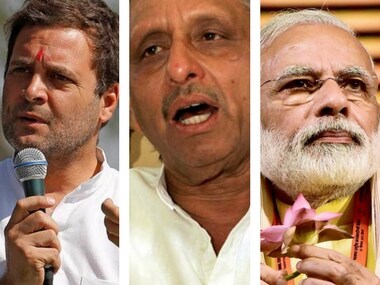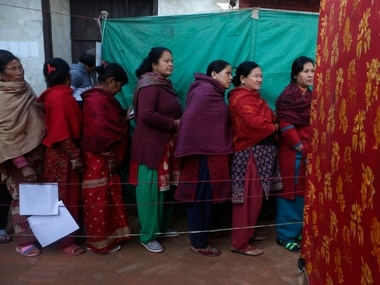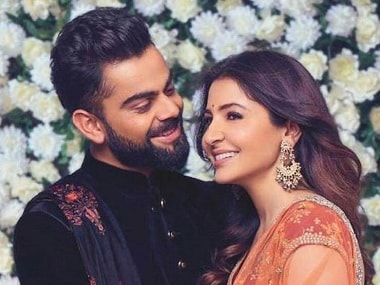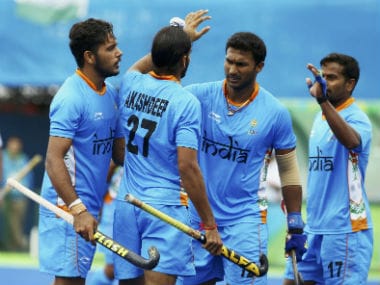The high-octane campaigning for the first phase of Gujarat Assembly election ended on Thursday with Prime Minister Narendra Modi addressing the Scheduled Caste and Scheduled Tribe workers from New Delhi due to the sudden advent of Cyclone Ockhi in the state. Congress vice-president Rahul Gandhi, who had several rallies scheduled in the state, cancelled his programme due to the cyclonic storm.
A total of 89 seats — out of 182 — spanning the Saurashtra and south Gujarat regions, are up for grabs in the first phase with 977 candidates in the fray, including Chief Minister Vijay Rupani. Voting will be held on 9 December.
While the BJP is fighting anti-incumbency and struggling to alter a seemingly negative perception about demonetisation and the Goods and Services Tax (GST) rollout, the Congress, galvanised by an assertive Rahul, has mainly targeted the "hollow Gujarat development model" to slam Modi.
Modi and Rahul had aggressively led their parties' campaigns in Saurashtra and south Gujarat which often turned personal. Saurashtra and Kutch are crucial for the ruling BJP as these two regions have the highest concentration of seats in the first phase.
Political pundits believe that the party winning the maximum number of seats from Saurashtra and Kutch will be better placed to form the next government in the state.
Saurashtra, located on the Arabian Sea coast, covers 11 districts of the state. Kutch is the largest district comprising 10 talukas, 939 villages and six municipalities.

File image of Narendra Modi on the campaign trail. AP
Of the 58 seats in Saurashtra and Kutch, the BJP had won 35 in the 2012 Assembly polls and the Congress 20. Of the remaining three seats, two were won by the now-defunct Gujarat Parivartan Party (GPP) of Keshubhai Patel and one by the Nationalist Congress Party (NCP).
In 2007, the tally of the BJP and the Congress in Saurashtra and Kutch stood at 43 and 14 respectively, while the NCP had bagged one seat.
Of the 35 seats spread across the seven districts of south Gujarat, the BJP had won 28 and the Congress six in the 2012 polls. The remaining seat was won by "Others".
Prominent candidates
Prominent candidates in the fray for the Saturday battle include Rupani, who is contesting from Rajkot (West) against the Congress' Indranil Rajyaguru, Shaktisinh Gohil (Mandvi) and Paresh Dhanani (Amreli) — both from the Congress.
Rajput strongman Gohil has locked horns with the BJP's new face, Virendrasinh Jadeja, also a Rajput, in the Muslim- dominated seat.
In Patidar-dominated Amreli, Dhanani (the sitting Congress MLA) is pitted against BJP heavyweight Bavkubhai Undhad, the legislator from the nearby Lathi seat.
Narendra Modi versus Rahul Gandhi
The campaign mainly shaped up as a duel between Modi and Gandhi, with the latter emerging as the Congress' pivot to take on the might of the prime minister on the latter's home turf.
A big takeaway for the Congress was ensuring the support of the Hardik Patel-led Patidar Anamat Andolan Samiti (PAAS), an umbrella organisation of the numerically strong Patidar community, which traditionally formed the bedrock of the BJP's support in Gujarat.

File image of Rahul Gandhi on the campaign trail. PTI
In its bid to form a caste bloc against the BJP, the Congress won over Alpesh Thakor, Patel and Jignesh Mewani, who have emerged as the young Turks representing the OBCs, Patidars and Dalits respectively.
The Congress, which has been in the political wilderness in Gujarat for 22 years, is desperate to break the jinx. It has raised issues such as the BJP's "hollow development model", "the prime minister's proximity with select industrialists", besides demonetisation and GST, at the hustings.
The second and final phase of the polls will be held on 14 December and the counting of votes will be taken up on 18 December.
A brief note on CVoter's methodology and margin of error
The CVoter survey involved a sample size of 15,000-plus respondents across all 182 Assembly segments of Gujarat. Fieldwork was carried out in the last week of November.
The Margin of Error is +/- 3 percent at the state-level and +/- 5 percent at the regional-level
Click here for detailed coverage of Gujarat Assembly election 2017
Published Date: Dec 08, 2017 01:19 pm | Updated Date: Dec 08, 2017 01:25 pm

















